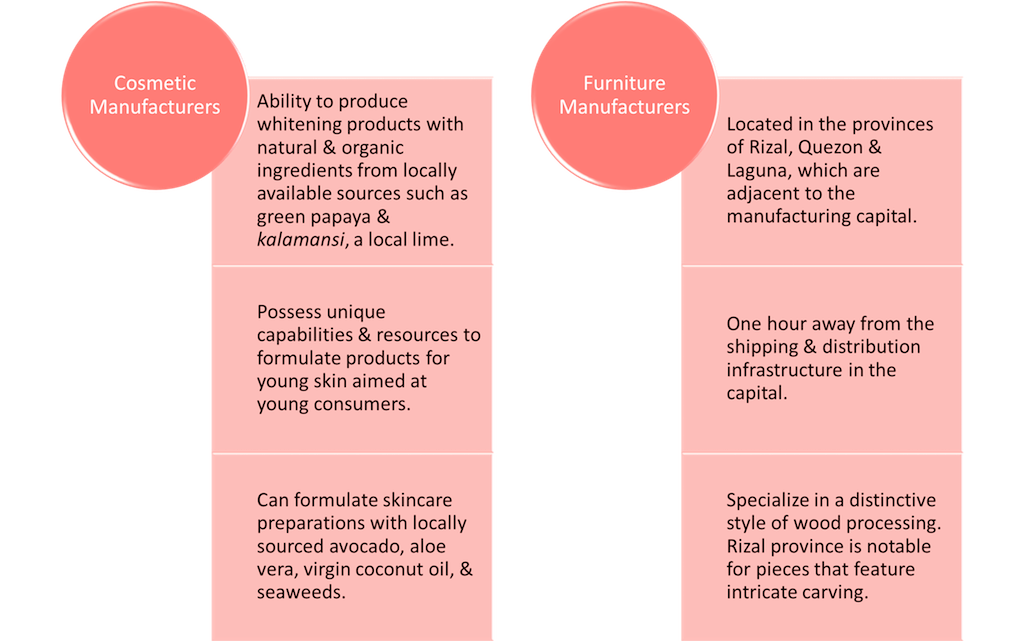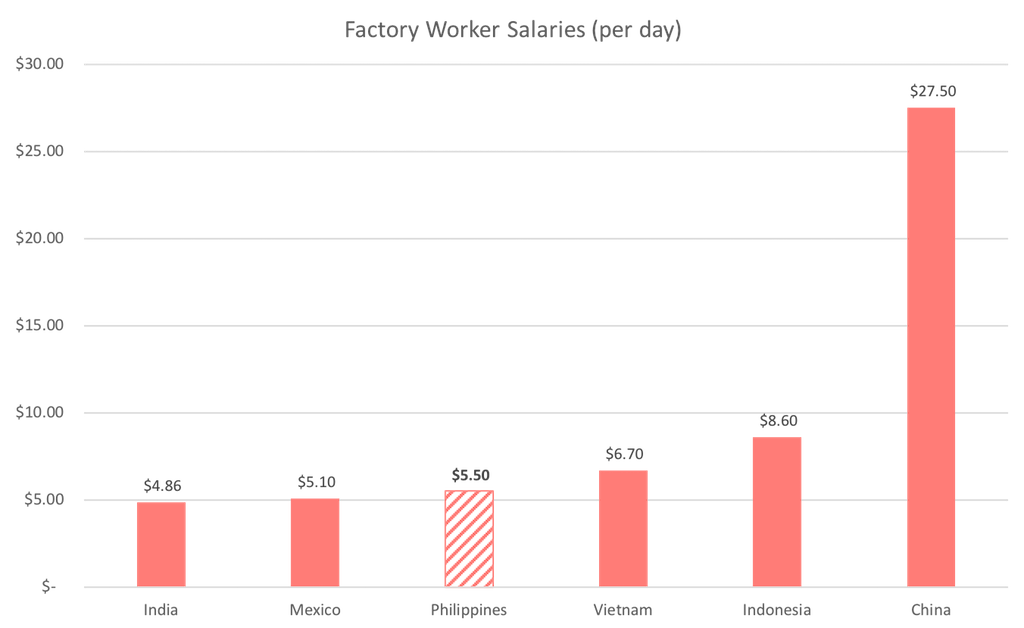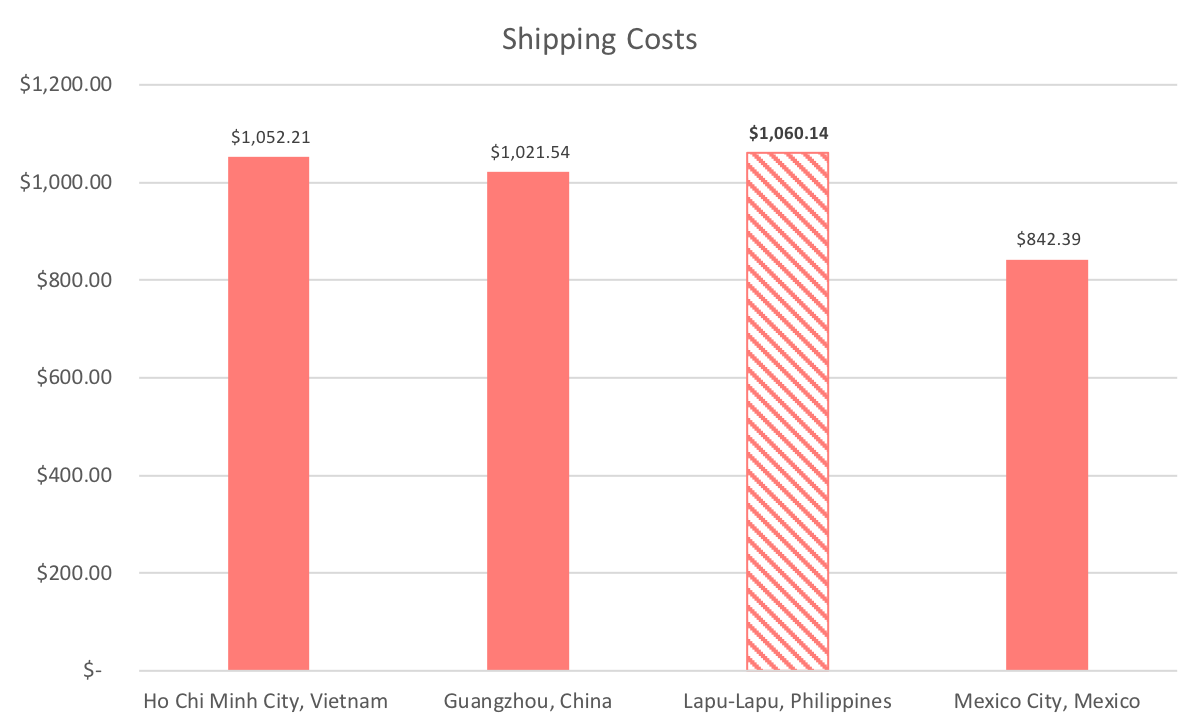Country Overview
The 2018 speaker of the Economic Forum called the manufacturing industry in the Philippines “a new growth driver.”
The nation is expecting growth in infrastructure and plans to finance this growth with the help of their neighbor, China, the biggest trade partner of the Philippines.
The manufacturing industry is currently the third top performing sector for the year led by infrastructure, real estate, transportation, and logistics. Under the Manufacturing Resurgence Program, the target is to contribute 15 percent of the country’s total employment by 2025 from only 10 percent in 2016, which will lead to more factories and potentially an increase of product categories.
As a new retailer not wanting to compete for manufacturers in the U.S. or China, looking to source your products from the Philippines is an advantageous alternative.




